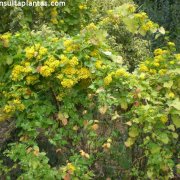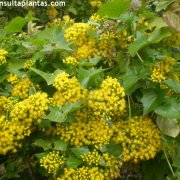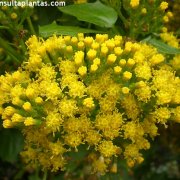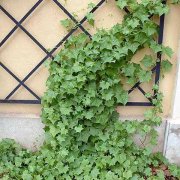Care of the climbing plant Senecio mikanioides or German ivy |
|
The genus Senecio, family Asteraceae, comprises 1,600 species of herbaceous succulent plants and shrubs distributed over all continents. Some species are: Senecio mikanioides, Senecio mandraliscae, Senecio kleinia, Senecio cruentus, Senecio barbertonicus, Senecio angulatus, Senecio stapeliiformis, Senecio serpens, Senecio elegans, Senecio pseudolongifolius, Senecio bicolor, Senecio macroglossus, Senecio jacobsenii, Senecio scaposus, Senecio compactus, Senecio petasitis, Senecio rowleyanus. Common name: German ivy. This species is native to South Africa. They are herbaceous evergreen sarmentosum plants that reach 7 meters (23 feet) in length. The glossy leaves are fleshy, heart-shaped and very similar to ivy leaves. Produces many scented yellow flowers. German ivy is used to cover walls and pergolas, on slopes and in hanging pots. Senecio mikanioides needs full sun or semi-shade exposure (it will produce fewer flowers). It's ideal for gardens with a Mediterranean climate and for cities. It resists occasional frosts. German ivy is a very rustic plant that grows in any type of soil, even calcareous ones. Water moderately all year long, waiting for the soil to dry out. Senecio mikanioides is a drought resistant plant. Prune in late winter to control their growth because they tend to be invasive plants. Senecio mikanioides does not need fertilizers. German ivy is an easy to grow plant and resistant to the main pests and diseases. Senecio mikanioides is propagated from cuttings in spring. |
Images of the climbing plant Senecio mikanioides or German ivy |
Find plants
Senecio mikanioides or German ivy | Care and Growing
© 2025 FavThemes



